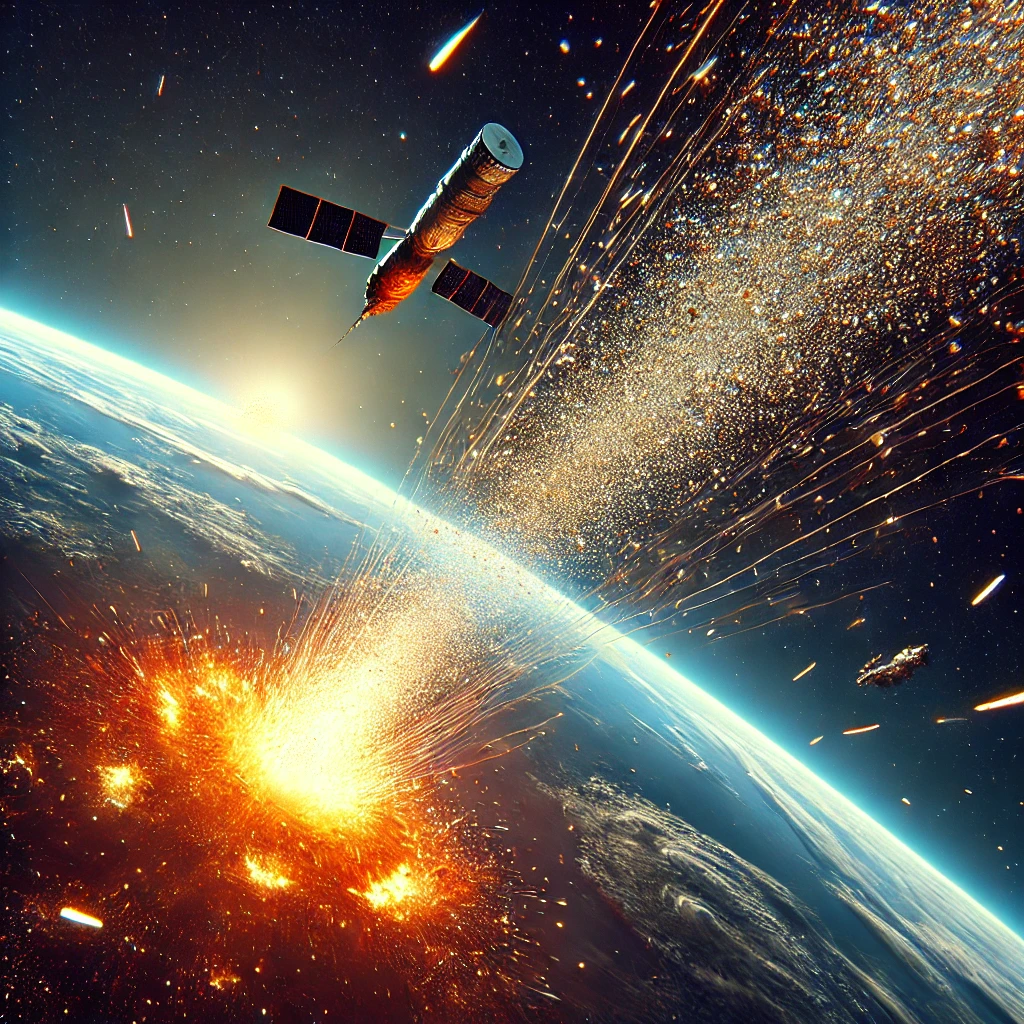the document titled “Potential Ozone Depletion From Satellite Demise During Atmospheric Reentry in the Era of Mega-Constellations” by José P. Ferreira and others discusses the potential environmental impacts, specifically ozone depletion, from the reentry of satellites into the Earth’s atmosphere. The study uses atomic-scale molecular dynamics simulations to explore the oxidation process of aluminum, a common material in satellites, during reentry, which leads to the production of aluminum oxides. These aluminum oxides are known catalysts for chlorine activation, which contributes to ozone depletion.
Key findings from the document include:
- Aluminum Oxide Production: The demise of a typical 250-kg satellite during atmospheric reentry can generate approximately 30 kg of aluminum oxide nanoparticles. These particles can persist in the atmosphere for decades, potentially leading to significant ozone depletion.
- Increase in Atmospheric Aluminum: The document notes a 29.5% increase in atmospheric aluminum levels in 2022 due to satellite reentries, leading to about 17 metric tons of aluminum oxides. Projections suggest that future mega-constellations could result in over 360 metric tons of aluminum oxides per year.
- Ozone Depletion Potential: The aluminum oxides generated during satellite reentries may take up to 30 years to settle into the stratosphere, where they can catalyze chlorine activation, contributing to ozone depletion.
- Environmental Impact: The long-term accumulation of aluminum oxides in the atmosphere due to increasing satellite reentry rates could have significant environmental impacts, particularly on the ozone layer.
These findings highlight the need for further exploration of the environmental consequences of the growing number of satellites and their eventual reentry into the Earth’s atmosphere, especially in the context of large-scale satellite constellations planned for the future.
As the space industry advances, the skies above Earth are becoming increasingly crowded with satellites. These satellites play critical roles in global communications, weather monitoring, navigation, and much more. However, as they reach the end of their service lives, they reenter Earth’s atmosphere, burning up in a spectacular blaze. But beyond the spectacle, this process could have serious environmental implications, particularly for the ozone layer that protects all life on Earth from harmful ultraviolet radiation.
The Growing Satellite Population
In recent years, we’ve witnessed a significant increase in the number of satellites orbiting Earth, largely due to the rise of mega-constellations—large groups of satellites launched to provide global internet coverage and other services. As these constellations grow, so does the number of satellites that eventually reenter the atmosphere.
According to a recent study published in Geophysical Research Letters, the annual mass of satellites reentering Earth’s atmosphere could reach up to 3,200 metric tons in the coming years. This alarming figure suggests a substantial increase in the amount of debris burning up in the atmosphere.
The Science Behind Ozone Depletion
When a satellite reenters the atmosphere, it typically burns up, losing between 51% and 95% of its mass. A significant component of this mass is aluminum, a material commonly used in satellite construction. As the aluminum burns, it reacts with oxygen to form aluminum oxide nanoparticles. These nanoparticles, while tiny, have a huge potential impact on our environment.
Aluminum oxides act as catalysts for chlorine activation—a chemical process that directly contributes to the depletion of the ozone layer. The ozone layer, which sits in the stratosphere, absorbs and scatters the sun’s ultraviolet radiation, shielding life on Earth from its harmful effects. When the ozone layer is depleted, more ultraviolet radiation reaches the Earth’s surface, leading to increased risks of skin cancer, cataracts, and other health issues, as well as negative impacts on ecosystems.
The Scale of the Problem
The study conducted by Ferreira and colleagues at the University of Southern California used advanced atomic-scale molecular dynamics simulations to understand the oxidation process of aluminum during reentry. They found that the reentry of a single 250-kg satellite could produce around 30 kg of aluminum oxide nanoparticles. These particles can persist in the atmosphere for decades, gradually settling into the stratosphere where they catalyze ozone-depleting reactions.
In 2022 alone, it is estimated that 17 metric tons of aluminum oxides were introduced into the atmosphere from reentering satellites, representing a 29.5% increase above natural levels. Looking ahead, the rise of mega-constellations could lead to the injection of over 360 metric tons of aluminum oxides into the atmosphere annually.
Long-Term Environmental Impacts
The potential long-term environmental impact of this aluminum oxide accumulation is concerning. As these nanoparticles linger in the mesosphere, they slowly descend into the stratosphere. Once they reach an altitude of about 40 km, they can begin to catalyze chlorine activation, leading to ozone depletion.
This process could result in a noticeable delay between the introduction of aluminum oxides into the atmosphere and the observable effects on the ozone layer. By the time the damage is detected, it may be too late to reverse it.
What Can Be Done?
Given the potential for significant environmental harm, it’s crucial that the space industry, policymakers, and environmental scientists work together to mitigate these risks. Here are some steps that could be taken:
- Design for Demise: Satellites could be designed with materials that are less harmful upon reentry or that fully disintegrate without leaving harmful byproducts.
- Active Debris Removal: Implementing active debris removal strategies could reduce the number of satellites reentering the atmosphere.
- Regulatory Oversight: Governments and international bodies could enforce stricter regulations on satellite materials and end-of-life disposal methods to minimize environmental impacts.
- Further Research: Continued research into the effects of satellite reentry on the ozone layer is essential. This could include developing more sophisticated models to predict long-term impacts and exploring alternative materials for satellite construction.
Conclusion
As humanity ventures further into space, it’s imperative that we consider the environmental consequences of our activities. The potential for ozone depletion due to satellite reentry is a pressing issue that warrants immediate attention. By taking proactive steps now, we can help ensure that our pursuit of technological advancement does not come at the cost of the planet’s health.








